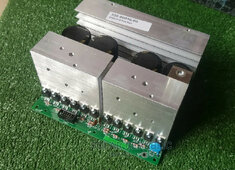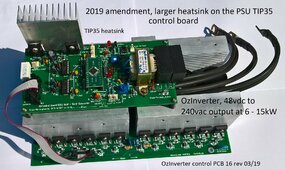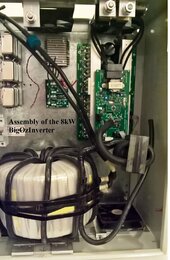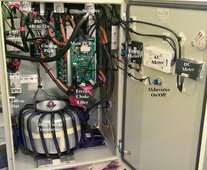Not really any suprise that toroid transformer core doesn't work as a choke. It has high relative permeability (>2000) and it means that it will saturate at very low current. Probably takes only tens of milliamps DC to saturate toroid transformer primary.
You would need to gap it to lower the permeability but gapping wound toroid cores is easier said than done.
For chokes or inductors you generally want the relative permeability somewhere between 20 to 100. I'd start at 40. For ferrite or iron lamination E-cores the required air gap is easy to calculate.
With distributed air gap material(MPP, Sendust, iron powder) you are stuck at what is available from market ie.
Coil Winding Specialist, Inc. : MPP, Sendust, Kool Mu®, High Flux and Iron Powder Core Prope - Custom Products Application Notes Cross Reference About Us Design Consulting Products GSA PRISM Lighting News Articles coil, ecommerce, open source, shop, online shopping, store
www.coilws.com
Yes, toroids wound from silicon steel are only suitable for transformers or inductors where there is zero dc current.
But you can buy U cores made from exactly the same wound silicon steel as the toroids. Instead of being wound over a round mandrel, they are wound over a rectangular mandrel, then cut in half. That allows the incorporation of an air gap, and these do make wonderfully cost effective high power chokes for some applications.
A choke by definition has to carry a dc current, but also support an ac voltage across the choke. When designing a choke both these requirements must be met, and both requirements can cover a huge range for different applications. That is why there is such a very wide choice of core materials available. And then you get to choose either an ungapped core of suitable permeability, or a gapped core where you can adjust the permeability to get exactly what is needed by experimentation with the gap. This offers obvious advantages for an experimental project.
There are some fundamental requirements that ALL need to be met when deciding if a particular choke is going to be effective.
The basic ones are:
How much inductance will it have with both high and low dc current..
Will it saturate, and will it have soft, or a brick wall saturation characteristic.
Will the core material overheat.
Will the wire overheat.
But there are some other requirements too:
Will the choke be operating well below self resonance.
Will the choke in combination with external capacitance produce a resonance (it always will) but is it going to be harmful.
Will ripple current be high enough that skin effect in the wire becomes a problem.
Is the insulation up to the job.
These factors individually can end up being of negligible significance, to presenting a horrific and insurmountable problem depending on what the choke is being used for. The art of choke design is in deciding what is important for a particular application, and trying a few different approaches using published data. There is no direct method of reaching an optimum solution very first try. Its an iterative process, first on paper, then maybe with some real world testing and experimentation. Ten different choke designers will come up with ten very different designs.
Some will work better than others, some may be smaller or cheaper. But they will probably in the end all be usable.






